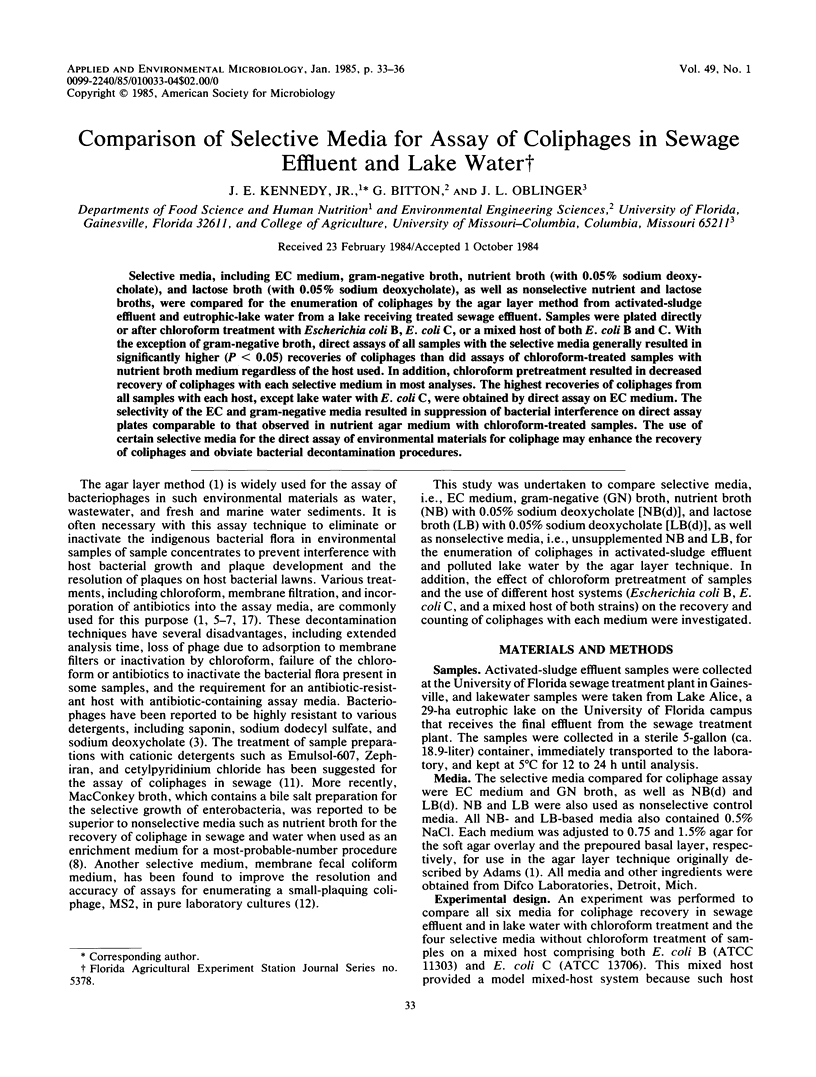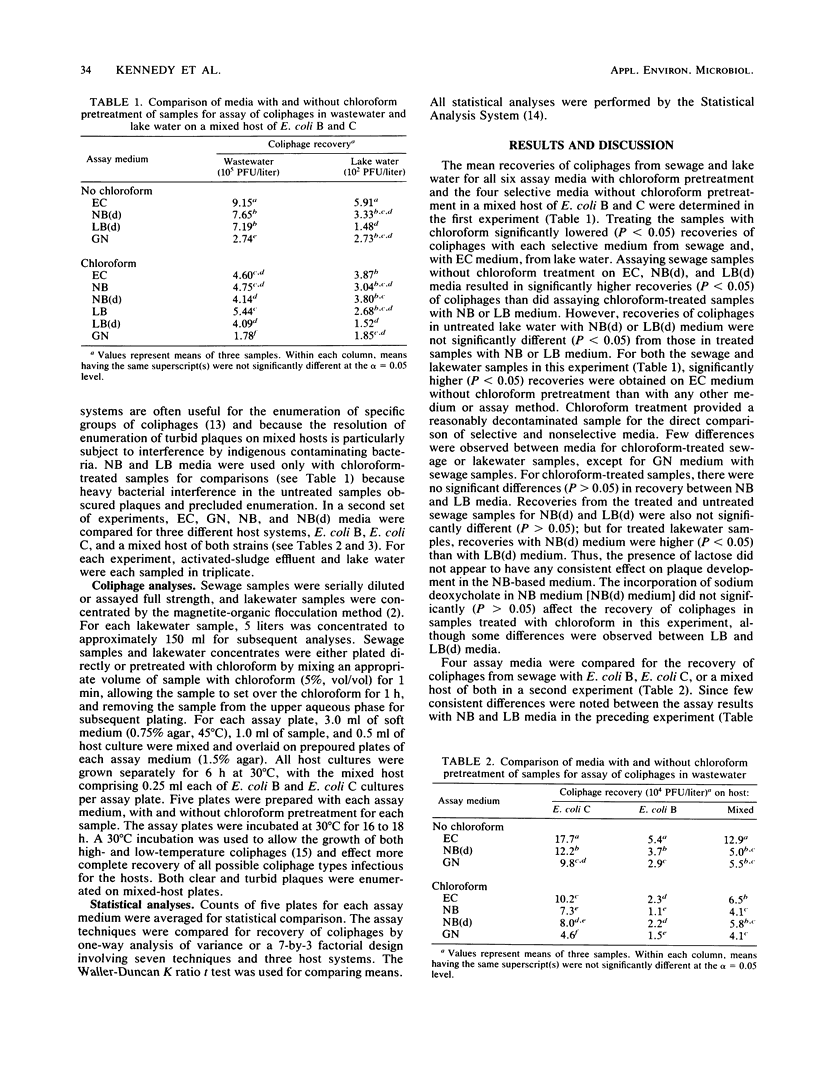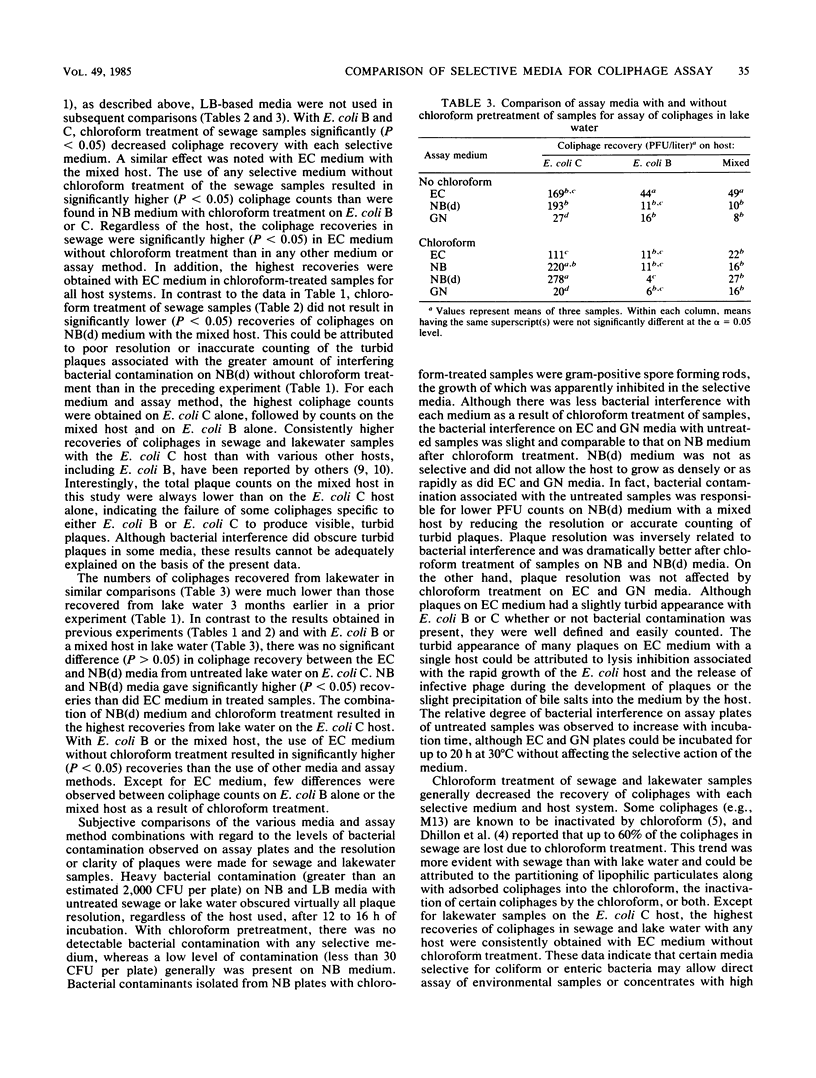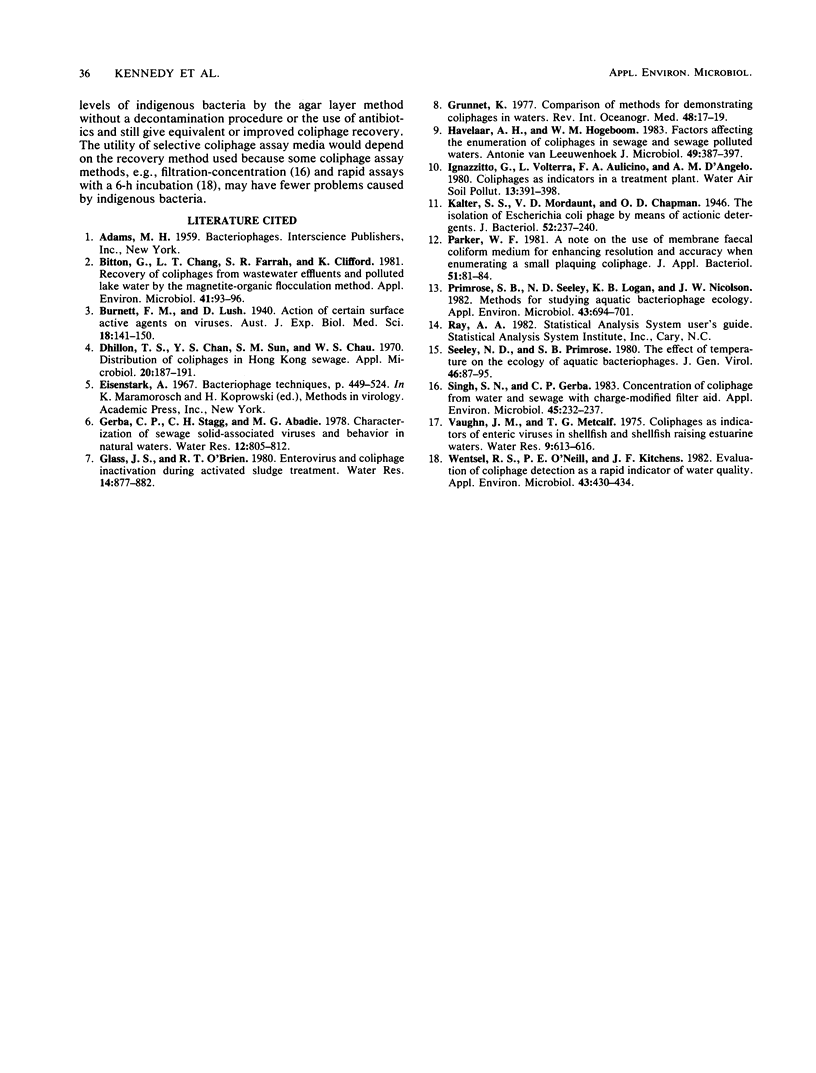Abstract
Selective media, including EC medium, gram-negative broth, nutrient broth (with 0.05% sodium deoxycholate), and lactose broth (with 0.05% sodium deoxycholate), as well as nonselective nutrient and lactose broths, were compared for the enumeration of coliphages by the agar layer method from activated-sludge effluent and eutrophic-lake water from a lake receiving treated sewage effluent. Samples were plated directly or after chloroform treatment with Escherichia coli B, E. coli C, or a mixed host of both E. coli B and C. With the exception of gram-negative broth, direct assays of all samples with the selective media generally resulted in significantly higher (P less than 0.05) recoveries of coliphages than did assays of chloroform-treated samples with nutrient broth medium regardless of the host used. In addition, chloroform pretreatment resulted in decreased recovery of coliphages with each selective medium in most analyses. The highest recoveries of coliphages from all samples with each host, except lake water with E. coli C, were obtained by direct assay on EC medium. The selectivity of the EC and gram-negative media resulted in suppression of bacterial interference on direct assay plates comparable to that observed in nutrient agar medium with chloroform-treated samples. The use of certain selective media for the direct assay of environmental materials for coliphage may enhance the recovery of coliphages and obviate bacterial decontamination procedures.
Full text
PDF



Selected References
These references are in PubMed. This may not be the complete list of references from this article.
- Bitton G., Chang L. T., Farrah S. R., Clifford K. Recovery of coliphages from wastewater effluents and polluted lake water by the magnetite-organic flocculation method. Appl Environ Microbiol. 1981 Jan;41(1):93–96. doi: 10.1128/aem.41.1.93-96.1981. [DOI] [PMC free article] [PubMed] [Google Scholar]
- Dhillon T. S., Chan Y. S., Sun S. M., Chau W. S. Distribution of coliphages in Hong Kong sewage. Appl Microbiol. 1970 Aug;20(2):187–191. doi: 10.1128/am.20.2.187-191.1970. [DOI] [PMC free article] [PubMed] [Google Scholar]
- Havelaar A. H., Hogeboom W. M. Factors affecting the enumeration of coliphages in sewage and sewage-polluted waters. Antonie Van Leeuwenhoek. 1983 Nov;49(4-5):387–397. doi: 10.1007/BF00399318. [DOI] [PubMed] [Google Scholar]
- Kalter S. S., Mordaunt V. D., Chapman O. D. The Isolation of Escherichia coli Phage by Means of Cationic Detergents. J Bacteriol. 1946 Aug;52(2):237–240. [PMC free article] [PubMed] [Google Scholar]
- Parker W. F. A note on the use of membrane faecal coliform medium for enhancing resolution and accuracy when enumerating a small plaquing coliphage. J Appl Bacteriol. 1981 Aug;51(1):81–84. doi: 10.1111/j.1365-2672.1981.tb00910.x. [DOI] [PubMed] [Google Scholar]
- Primrose S. B., Seeley N. D., Logan K. B., Nicolson J. W. Methods for studying aquatic bacteriophage ecology. Appl Environ Microbiol. 1982 Mar;43(3):694–701. doi: 10.1128/aem.43.3.694-701.1982. [DOI] [PMC free article] [PubMed] [Google Scholar]
- Singh S. N., Gerba C. P. Concentration of coliphage from water and sewage with charge-modified filter aid. Appl Environ Microbiol. 1983 Jan;45(1):232–237. doi: 10.1128/aem.45.1.232-237.1983. [DOI] [PMC free article] [PubMed] [Google Scholar]
- Wentsel R. S., O'Neill P. E., Kitchens J. F. Evaluation of coliphage detection as a rapid indicator of water quality. Appl Environ Microbiol. 1982 Feb;43(2):430–434. doi: 10.1128/aem.43.2.430-434.1982. [DOI] [PMC free article] [PubMed] [Google Scholar]


